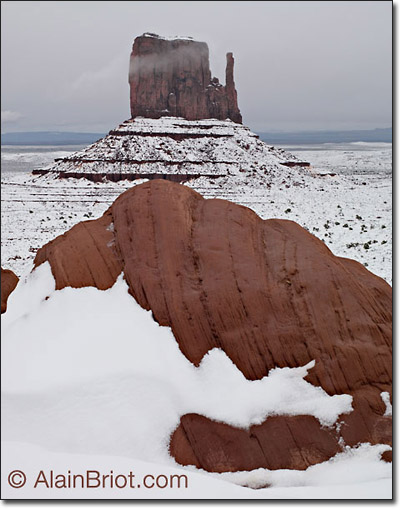What Is A Snapshot? |
Introduction
We often call certain photographs “snapshots.” However, we rarely pause and ask ourselves, “what is a snapshot?” Instead, we take it for granted that we know what a snapshot is.
But do we? Personally, I believe that we do not. At least not precisely. Not in a way that enables us to give a list of “qualities,” or lack of, that a photograph must exhibit in order to be considered a snapshot.
What is a Snapshot?
I thought that the simplest way of presenting my ideas about snapshots was by making a checklist.
After making a loose list of items that I consider important, I decided to organize this list by grouping these items by main categories, starting with composing the image, continuing with the intended audience, proceeding to processing, optimization and printing, and concluding with the meaning of the image.
The outcome is the checklist presented below. As you read through it, keep in mind that in this checklist I am comparing snapshots to fine art photographs. Clearly, the two have entirely different goals and the outcome from both endeavors is of a very different order of magnitude.
It will make a lot more sense if you compare the items in this checklist to my description of Fine Art Photography. You can find this description in many of my writings: in my second book, Mastering Composition, Creativity and Personal Style, in several of my online essays and in my Mastery Workshops on DVD tutorial series.
This being said let us now take a careful look at what a snapshot consists of:
1) Composition: Entire Image
There is no organization of the visual space or this organization is superficial.
Some areas of the image serve no purpose at all.
Since what doesn’t add to a photograph detracts, many things are distracting.
Certain objects are present in the image but serve no purpose.
The center of the image is often privileged while corners and borders are ignored.
Rules are not followed, or broken, or combined. Rules are simply ignored.
2) Composition: Image Borders
No attention is given to the borders and edges of the image.
Objects located along the borders pop into the frame unexpectedly.
These objects weaken the composition and detract from the image center of interest.
Clean edges and controlled image borders are trademarks of carefully composed photographs.
Therefore snapshots are not carefully composed photographs.
3) Horizon
The horizon may be accidentally tilted.
This is often the consequence of not paying attention to leveling the camera.
The horizon is often placed in the middle of the image inadvertently.
4) Audience
The audience and the audience’s needs are rarely considered.
The audience can be the photographer alone.
Or it can be friends and family.
Most of the time, the audience is "whoever wants to look at my photographs."
5) Processing and Optimization
Color balance, contrast, etc. are decided by the camera and not by the photographer.
There is no attempt to express something through the processing of the image.
No attempt is made to create a specific color palette.
No attempt is made to create a specific contrast level.
6) Printing
Images are often shared as jpegs instead of prints.
If prints are made, snapshots are usually printed full frame.
They are rarely cropped to a format different from the format provided by the camera.
If they are cropped it is to fit the paper size used by the lab.
Cropping is usually uncontrolled or accidental.
The image borders are often trimmed and only part of the image is shown.
Prints are typically machine made by a commercial lab.
Lab choice is based on prices and special offers.
No consideration is given to print density, burning-in borders or other aspects of printing.
Prints are done without the photographer’s interaction or supervision.
If matted, commercially available standard size and standard opening size mats are used.
7) Meaning
The message of the image is almost always: "I was there and I saw or did this."
The image does not feature a metaphorical level.
The image is usually purely documentary.
It is about facts instead of ideas and concepts.
It is a record of places and events.
The subject is represented objectively instead of subjectively.
8) Vision and Emotional Response
There is no attempt to express the vision of the photographer.
The image is not the expression of an emotional response to the subject.
There is no emotional content.
The image is a record shot, not an expressive image.
Things have not been ‘seen’ when the photograph was taken.
Snapshots contain no intentional mystery.
They have no secondary layers of meaning.
Instead, everything is revealed at once.
9) Visualization
Snapshots are not pre-visualized or post-visualized.
No visual aides are used (such as viewfinders for example).
The photographer does not search for the strongest way of seeing the scene.
The photographer does not walk the scene.
No consideration is given to flipping the image left to right.
No consideration is given to color versus black and white.
No consideration is given to cropping the original capture to a different format.
The image is usually framed in the direction of the camera viewfinder.
The camera is rarely tilted to the side to try both horizontal and vertical compositions.
Snapshots are disconnected from each other.
There is no attempt to create a series of images or to work on projects.
10) Example

May Snowstorm #2, Monument Valley
We arrived at this location right after a unexpected May snowstorm. Snow in the Southwest is a winter event and it does not snow every year. Therefore, snow in May is quite extraordinary. At first I started photographing the place to document this uncommon event. As I photographed I realized that just being there at this unique time was not going to give me a unique photograph. To create a unique image I needed to work out a unique composition.
This image was literally the last one I created on that day. By focusing on the graphic pattern created by the melting snow, and by creating a visual comparison between the sandstone dome in the foreground and the sandstone monument in the background, I was able to create an image that expressed not just what I saw but also what I felt. I also created an image that can never be done again because the snow pattern on the foreground rock will not happen again in exactly the same way.
11) Conclusion
Composition is a machine and a good composition is a machine that runs smoothly.
In the case of snapshots this machine is broken.
In fact it usually cannot be repaired.
But the goal was never to create a properly working machine.
The goal was to record a personal event or moment.
Skillfulness and mastery of the photographic medium were not considered.
Photography is used only for its most obvious ability: to record things as they look.
Comments on NPN landscape photography articles? Send them to the editor. NPN members may also log in and leave their comments below.
 Alain Briot creates fine art photographs, teaches workshops and offers DVD tutorials on composition, raw conversion, optimization, printing, marketing photographs and more. Alain is also the author of Mastering Landscape Photography and Mastering Photographic Composition, Creativity and Personal Style. Both books are available from Amazon and other bookstores as well from Alain’s website.
Alain Briot creates fine art photographs, teaches workshops and offers DVD tutorials on composition, raw conversion, optimization, printing, marketing photographs and more. Alain is also the author of Mastering Landscape Photography and Mastering Photographic Composition, Creativity and Personal Style. Both books are available from Amazon and other bookstores as well from Alain’s website.
You can find more information about Alain's work, writings and tutorials as well as subscribe to Alain’s Free Monthly Newsletter on his website at http://www.beautiful-landscape.com. You will receive over 40 essays in PDF format, including chapters from Alain’s books, when you subscribe.